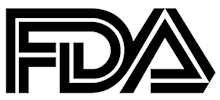|
Intellicheck Has the Solution
FDA Escalates Enforcement Actions After Youth Tobacco Survey
Historic Milestone - One Million Retailer Inspections
 FDA
outlines data from FDA/CDC 2018 National Youth Tobacco Survey showing rise in
under-aged tobacco use and hints at next steps. FDA
outlines data from FDA/CDC 2018 National Youth Tobacco Survey showing rise in
under-aged tobacco use and hints at next steps.
On Monday, Feb. 11, FDA Commissioner Scott Gottlieb, M.D. released a statement
on new data demonstrating rising youth use of tobacco products and the agency’s
ongoing actions to confront the epidemic of youth e-cigarette use.
Gottlieb’s statement is as follows:
Today, the U.S. Centers for Disease Control and Prevention (CDC) released
additional data from
our joint FDA/CDC 2018 National Youth Tobacco Survey. These data are a sobering
reminder of the initial results we shared
last fall indicating a rampant rise of youth e-cigarette use, which has
prompted the FDA to take a series of escalating regulatory actions as part of
our
Youth Tobacco Prevention Plan. We are advancing those actions, and
committing to some new steps. The epidemic use of e-cigarettes among children is
one of the biggest public health challenges currently facing the FDA.
According to the data released today, approximately 4.9 million middle and high
school students were current users (used in the past 30 days) of some type of
tobacco product in 2018, up from 3.6 million in 2017. This increase is driven by
an alarming surge in e-cigarette use. More than 3.6 million middle and high
school students were current (past 30 day) e-cigarette users in 2018, a dramatic
increase of more than 1.5 million students in one year. The study authors
suggest -- as the FDA also noted at the time of the initial release of this data
in the fall – that the rise in e-cigarette use in the last year is likely due to
the recent popularity of certain types of e-cigarettes, such as JUUL. Further,
youth who use e-cigarettes also are using them more frequently and using
flavored products more often than last year. Many youth tobacco product users
are also using multiple products. Among current tobacco users, about 2 in 5
(1.68 million) high school students and 1 in 3 (270,000) middle school students
used two or more tobacco products in 2018. The most commonly used tobacco
product combination was e-cigarettes and conventional cigarettes among both
middle and high school students.

Similarly, data from the recent National Institutes of Health’s
Monitoring the Future study found comparable trends: From 2017 to 2018,
current (past 30-day) e-cigarette use reportedly increased from 6.6 percent to
10.4 percent among 8th grade students; 13.1 percent to 21.7 percent among 10th
grade students; and 16.6 percent to 26.7 percent among 12th grade students. In
other words, more than a quarter of 12th graders in the U.S. are using
e-cigarettes—exposing them to harmful effects of nicotine and other chemicals
and putting them at risk of transitioning to other tobacco products.
These risks were further reinforced in research recently published in
JAMA Network Open, which showed that, compared with non-users, youth who use
e-cigarettes are more likely to transition to conventional cigarettes ‒ risking
a lifetime of addiction to smoking and resulting smoking-attributable disease
and erasing the reductions in youth smoking rates that we’ve achieved in
America. The bottom line is that kids using e-cigarettes aren’t kids who “would
have smoked cigarettes.” Quite the opposite. As a society, we’ve made great
strides in stigmatizing cigarette use among kids. The kids using e-cigarettes
are children who rejected conventional cigarettes, but don’t see the same stigma
associated with the use of e-cigarettes. But now, having become exposed to
nicotine through e-cigs, they will be more likely to smoke. I will not allow a
generation of children to become addicted to nicotine through e-cigarettes. We
must stop the trends of youth e-cigarette use from continuing to build and will
take whatever action is necessary to ensure these kids don’t become future
smokers.
Based on a growing body of evidence, I fear the youth trends will continue in
2019, forcing us to make some tough decisions about the regulatory status of
e-cigarettes. The signs that we’re seeing are not encouraging. They point to
continued growth in youth use of these products. No child should be using any
tobacco or nicotine-containing product. We’ll continue to take steps to try to
investigate the root causes of this spike in youth e-cigarette use and arrest
the momentum of these trends, in particular, by ensuring these products are sold
in ways that make them less accessible and appealing to youth. But, if these
youth use trends continue, we’ll be forced to consider regulatory steps that
could constrain or even foreclose the opportunities for currently addicted adult
smokers to have the same level of access to these products that they now enjoy.
I recognize that such a move could come with significant impacts to adult
smokers. The FDA has repeatedly affirmed our collective view that e-cigarettes
may have promise as a tool for helping currently addicted adult smokers quit
smoking. But, with the staggering data on youth trends, we’re struggling to
preserve these opportunities for adults while addressing the youth epidemic. I
simply won’t allow their sale to come at the expense of addicting a generation
of kids to nicotine.
To help address this growing use among
kids, over the past year, the FDA has taken a rigorous enforcement stance,
including a number of actions to combat the illegal sales of e-cigarettes to
youth through our
enforcement efforts at brick-and-mortar and internet storefronts, as well as
taken steps to target companies engaged in kid-friendly marketing that increases
the appeal of these products to youth. I’ve also appealed to the companies
responsible for many of these products, and met with senior executives from five
of the largest manufacturers of e-cigarette products. In addition, last week, I
sent letters to the chief executive officers of Altria Group Inc. and JUUL Labs
Inc. asking to meet with them to discuss my concerns that they don’t seem fully
committed to their written promises about the steps they’d take to stop youth
use of their products.
Just last week, the FDA
escalated enforcement action against certain local Walgreens and Circle K
retail locations for repeatedly selling tobacco products to minors by filing a
complaint seeking to bar the two specific retail locations from selling tobacco
products for 30 days. As part of that effort we’re also writing the corporate
management of a number of large, national retail chains to discuss whether there
is a corporate-wide issue related to their stores’ non-compliance and put them
on notice that the FDA is considering additional corporate-wide enforcement
avenues to address violative tobacco sales to youth, which have also included
illegal sales of e-cigarettes to kids. This past fall, we marked a historic
milestone of conducting a total of one million tobacco retailer inspections
since we began doing so in 2010. To commemorate this, we’re sending letters to
governors and agencies across the country thanking them for their work to
support our efforts to protect youth – and reminding them of the need for
continued vigilance to make sure retailers aren’t selling tobacco products to
minors.

Beyond enforcement and social responsibility, we’ve committed to meaningful
policy changes. Notably, in November, I announced
proposed new steps to protect youth by preventing access to flavored tobacco
products, including e-cigarettes. This policy framework will both address the
disturbing trend of youth e-cigarette use and advance the historic declines
we’ve achieved in recent years in the rates of combustible cigarette use among
kids. This framework reflects a re-doubling of the FDA’s efforts to protect kids
from all nicotine-containing products. It also reflects a very careful public
health balance between steps to enable the opportunities to transition to
non-combustible products to be available for adults; and our solemn mandate to
make nicotine products less accessible and less appealing to children. In other
words – a balance between closing the on-ramp for kids to become addicted to
nicotine through combustible and non-combustible products, while maintaining the
off ramp for adults through access to potentially less harmful forms of nicotine
delivery for adult smokers seeking to transition away from combustible tobacco
products.
Evidence shows that minors are especially attracted to flavored e-cigarette
products, and that youth access these products from both brick and mortar
retailers as well as online. With that in mind, we’re revisiting our compliance
policy that has resulted in certain e-cigarettes, including flavored
e-cigarettes, remaining on the market until 2022 while their manufacturers
submit applications for premarket authorization. In particular, as I announced
on Nov. 15, 2018, the FDA is revisiting the compliance policy on premarket
tobacco product application authorization for all flavored e-cigarette products
other than tobacco, mint, and menthol, sold in physical locations where people
under the age of 18 are permitted. For example, this would include e-cigarettes
or electronic nicotine delivery system (ENDS) products, such as e-liquids,
cartridge-based systems, and cigalikes, in fruit and candy flavors like cherry,
vanilla, crème, tropical, melon and others. In addition, we will seek to curtail
the sale of applicable flavored ENDS products that are sold online without
heightened age verification processes.
We’ll be providing further information on
these policies soon. If data continue to show upwards trends in youth use of
tobacco products, we’ll continue to refine our policies as necessary, taking
additional steps to strengthen our response.
More recently, we’ve undertaken efforts to further the discussion and
understanding around how we can help aid those kids who are already addicted to
the nicotine in e-cigarettes quit. This includes holding a
public hearing to discuss efforts to eliminate youth e-cigarette use as well
as other tobacco product use, with a focus on the potential role of drug
therapies to support cessation and the issues impacting the development of such
therapies for youth. Already, I’ve heard too many troubling stories from parents
of teenagers, pediatricians, and young people themselves about the effects of
this epidemic. The stories make clear that, for many young e-cigarette users,
addiction has already taken hold.
We’ve also
launched “The Real Cost” Youth E-Cigarette Prevention Campaign – a new,
comprehensive effort targets nearly 10.7 million youth, aged 12-17, who have
used e-cigarettes or are open to trying them. The new campaign features
hard-hitting advertising on digital and social media sites popular among teens,
as well as posters with e-cigarette prevention messages in high schools across
the nation. The new e-cigarette prevention effort builds off the FDA’s first
youth tobacco prevention campaign, “The Real Cost,” which launched in 2014 to
reduce teen cigarette smoking. In its first two years, the youth smoking
prevention campaign
prevented nearly 350,000 teens from initiating cigarette smoking and
resulted in savings of more than $31 billion for youth, their families and
society at large by reducing smoking-related costs like early loss of life,
costly medical care, lost wages, lower productivity and increased disability.
The success of “The Real Cost” campaign suggests that our other tobacco
prevention campaigns, including our campaign on youth use of e-cigarettes, can
build on this success as we strive to reduce the number of kids who use tobacco
products.
As part of the youth e-cigarette prevention campaign, we also
joined forces with Scholastic to expand distribution of youth e-cigarette
prevention posters to every public and private high school in the U.S. and
released
new resources for doctors, youth groups, churches, state and local public
health agencies, and others on the dangers of youth e-cigarette use.
Additionally, our work with Scholastic to provide educators with resources to
help them engage with students about e-cigarette use has helped reach more than
2.7 million students so far. We’ve also received very positive teacher feedback
on the helpfulness of these resources. Vaping remains a top issue at some
schools, but teachers are reporting that vaping on campus has declined after
using these resources on the dangers of youth e-cigarette use.
 While
these efforts are a good start, we recognize they’re not enough. This is an
exploding epidemic. We’ll continue to put the full scope of our regulatory tools
against this mounting public health crisis. We’re considering some new steps for
2019. While
these efforts are a good start, we recognize they’re not enough. This is an
exploding epidemic. We’ll continue to put the full scope of our regulatory tools
against this mounting public health crisis. We’re considering some new steps for
2019.
Moving forward, the FDA has a number of actions planned and we’ll have more to
say on these and other actions very soon. We’re continuing our stepped-up
enforcement actions with a sustained campaign to monitor, penalize and prevent
e-cigarette sales to minors in retail locations, including manufacturers’
internet storefronts. The agency is also exploring action under both its civil
and criminal enforcement tools to target potentially violative sales and
marketing practices by manufacturers as well as retailers. We’re also
investigating counterfeit e-cigarette products. In addition to our meeting with
Altria and JUUL, we also plan to meet with state attorneys general to discuss
how they can help combat youth e-cigarette use in their states. We’re also
exploring how we can partner with others to look at opportunities to work
together around these shared goals. These are just some of the additional steps
that we’re taking.
The numbers are clear – we’re experiencing epidemic-level rises in youth
e-cigarette use, which is threatening the progress we’ve made toward reducing
youth tobacco use. These trends require forceful and sometimes unprecedented
action among regulators, public health officials, manufacturers, retailers and
others to address this troubling problem. Our commitment to stemming the
epidemic of youth e-cigarette use has not waivered, but we know there’s more to
be done by all parties.
The FDA, an agency within the U.S. Department of Health and Human Services,
protects the public health by assuring the safety, effectiveness, and security
of human and veterinary drugs, vaccines and other biological products for human
use, and medical devices. The agency also is responsible for the safety and
security of our nation’s food supply, cosmetics, dietary supplements, products
that give off electronic radiation, and for regulating tobacco products.
Statement originally published on
fda.gov
|

